Thailand’s Festival of Lights – Loy Kratong
Update 2012: The Yi Peng festival took place in Mae Jo, Chiang Mai on the evening of November 25th 2012.
In Bangkok, waves of light twinkle down the Chao Praya under a glitzy fireworks show. In Sukhothai, their Loy Kratong celebration is more traditional, as teenagers in silk and gold costumes dance next to elaborate lighted rafts. In Chiang Mai, the Ping river turns into a glittering river of light while thousands of rice-paper lanterns rise into the sky (see ‘Yi Peng‘ video), accompanied by fireworks exploding from several bridges in the center of the city.
Loy Kratong is both a beautiful, solemn festival with deep connections to Thailand’s heritage and history, and a countrywide party for a week or more. This year, Loy Kratong happens on November 21st 2010, which is the full moon of the 12th lunar month on the Thai Buddhist calendar. The preparations, though, begin much earlier.
In Chiang Mai, huge lanterns shaped like animals and mythological figures have appeared, floating in the moat and beside the ruined walls around the Old City. Across Northern Thailand, dozens of paper lanterns rise into the sky every night, firecrackers explode in streets and fields, and the fruit and vegetable shops are also offering tiny banana leaf rafts.
These rafts are the kratong, small lotus-shaped boats made of banana leaves and banana tree, or environmentally insensitive Styrofoam. Loy means “to float,” and these rafts are entrusted with candles, incense, flowers, and coins before they are floated down rivers, into lakes, or simply atop a still backyard pond.
The kratong are both signs of respect to the goddess of the water, and apologies to the River Goddess for polluting her waters during the year – in fact, the more environmentally conscious kratong-makers now use bread, which dissolves faster than banana leaves so that, after the festival, waterways aren’t left crowded with abandoned rafts.
Some people also add a lock of hair or a fingernail clipping to their Kratong in a symbolic gesture of atonement, releasing them from the previous year’s misfortunes and to signify a fresh start for the coming year. Others may make wishes on their kratong, then watch them as they float away. If their candles stay alight, it means good fortune for the year ahead. Thai couples also keep an eye on their their kratong, as tradition holds that if two lovers’ kratong float down the river together, the couple will stay together.
While there are debates about Loy Kratong’s actual beginnings, the city of Sukhothai is the holiday’s traditional origin. The Royal consort Noppamas is credited with floating the first Kratong in the kingdom of Sukhothai, then Thailand’s capital, more than 700 years ago. The city honors her with beauty pageants around this festival. Their other celebrations include elaborate pageants and traditional dance performances. They also floats a procession of rafts decorated to represent the 17 provinces of the North, along with special rafts created by local governments, schools, and companies.
In the North, the Lanna Yi Peng festival (or Yee Peng) is celebrated around the same time as Loy Kratong. Giant rice-paper lanterns carry people’s cares away into the sky assisting them in making-merit, which is the Buddhist practice of doing good, for the year ahead. In the course of this festival, the streets of Northern cities like Chiang Mai are adorned with gilt illuminated lamps, and thousands of mesmerizing orange-glowing paper lanterns or Kom Loy float effortlessly above the city.
Kom Loy, also known as Kom Yipeng, are cylinders of rice-paper with a candle suspended underneath. The candle is lit and the lantern held close to the ground, careful not to let rice paper catch light. The hot air from the naked flame inflates the paper, and when the lantern is full it is released into the night sky. The Northern image of a sky full of burning lanterns above rivers of trembling rafts is one of Thailand’s most beautiful spectacles.
Our pictures for Yi Peng 2010 in Chiang Mai are on Facebook, why not ‘like’ our page while you’re there.
All Images © 2010 Temple of Thai except ‘Elaborate Carved Vegetable Kratong’ © iStockphoto.com/horst72

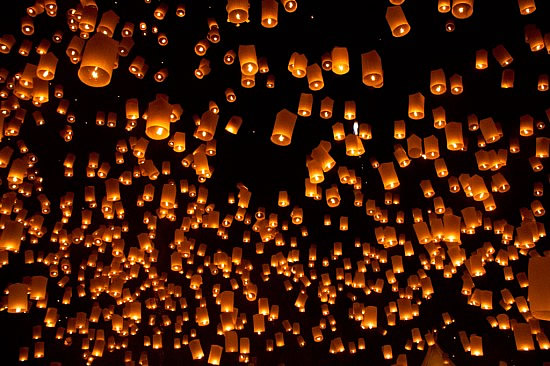
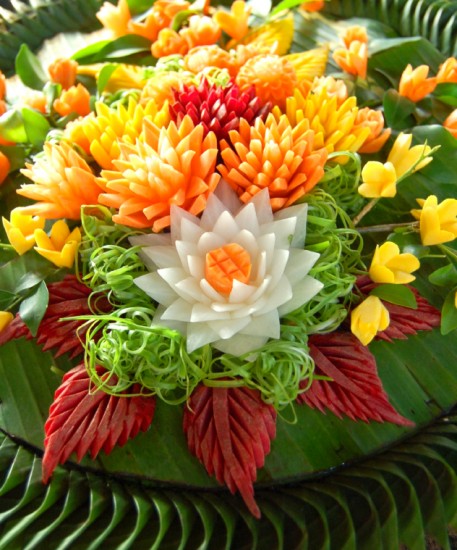
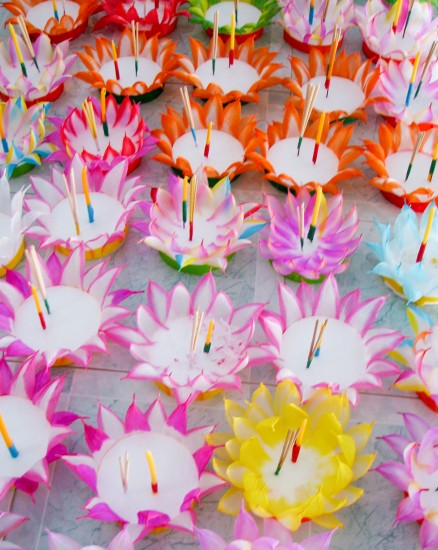
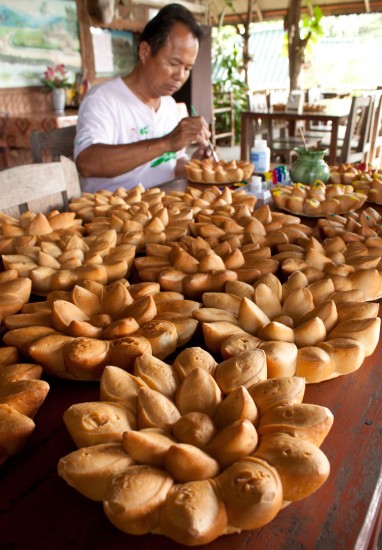
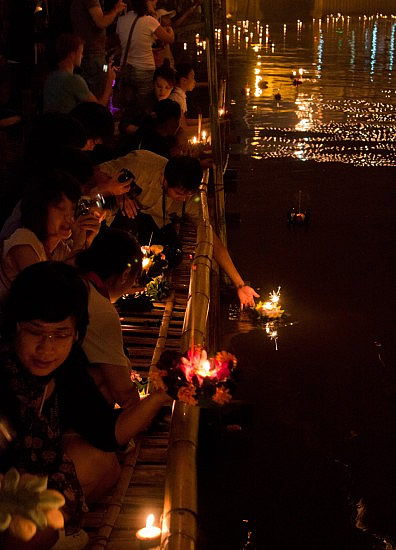

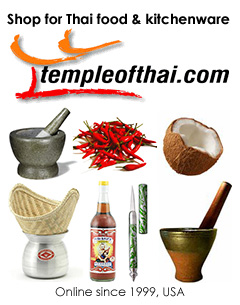


No Comments on "Thailand’s Festival of Lights – Loy Kratong"